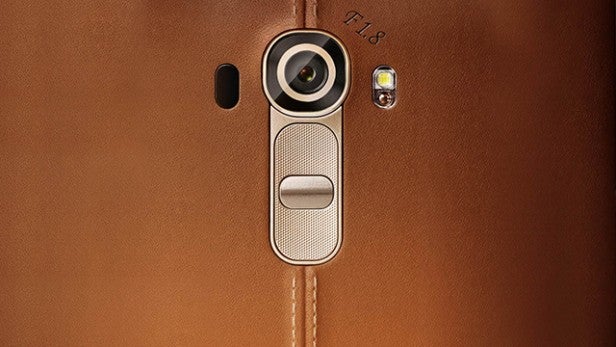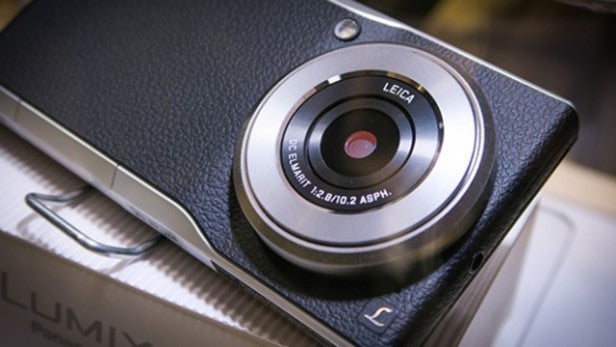World Photography Day: 5 tips to instantly improve your smartphone photography

Smartphone cameras have come a long, long way in recent years, and our guide explains how to get better quality photos from your smartphone.
We’ve had cameras on our phones for what seems like ages now, but they’ve only just gotten to the point where they pack the kind of professional calibre features we’re used to seeing on our dedicated cameras.
Better aperture, wider lenses, more manual controls in the camera app and the ability to shoot RAW – there’s a lot more to a smartphone cameras than just the amount of megapixels on the spec sheet.
With the iPhone 6 Plus, Samsung Galaxy S7 and Galaxy Note 7, HTC 10 and LG G5 – plus a couple of surprise handsets – all on the market and packing some serious tech, we take a look at five of the most professional features available on smartphones today.
Shoot in RAW
If you’re a keen photographer you’ll already know what shooting RAW means, but it’s probably a completely unknown term for those who mainly use their phones and compact cams to take pictures. So, we’re here to explain.
Shooting RAW doesn’t add any additional artifices or compress your photos, leaving you with an untouched image. It leads to much bigger file sizes, but you have complete control over you pictures when it comes to editing.
Best of all, it’s now fairly common to be able to shoot RAW with your phone.
Related: iPhone 6S vs Galaxy S7
A couple of Nokia’s Lumia devices boasted the tech first – notably the megapixel packing 1520 and 1020 – but Android Lollipop brought RAW support to other devices. Back in 2015, HTC beamed out an update to the One M9 to give it the functionality, and LG made it standard on the brand’s leather-clad G4. Obviously this year’s flagships have continued the trend.
Put simply, having RAW capability does give you a much better chance of getting a great shot. When we’ve taken RAW snaps and transferred them to a PC, the difference is clear to see.
The one niggle if you plan on shooting RAW on a full-time basis from your phone is that you need to have plenty of free storage, or bung in a MicroSD. Luckily, many phones now support storage expansion and offer large on-board capacities.
Use the manual controls
Manual controls are one of the biggest differentiators between point-and-shoot compact cameras and larger DSLRs, giving you more control over exactly how your pictures look, instead of just always shooting with the automatic modes which can be quite restrictive.
Now these features have come to phones, you can take much better pictures with that device that’s always in your pocket. Flagship phones from the likes of LG and Samsung feature clever camera apps that push the boundaries of when it comes to mobile photography but, crucially, those manual controls don’t feel like a minefield to explore and use.
Take the LG G5, for example. Inside the app you can tweak shutter speed, ISO and white balance. But, what exactly do they mean? Well, changing the shutter speed is great if you want to capture fast moving shots, like sports, but you can also leave the shutter open longer to create some cool effects and play about with the light. ISO is all about sensitivity – the lower the ISO the less sensitive it will be to light and the higher the more sensitive, so keeping it on the low-end will produce much clearer, and less grainy, shots.
Related: Best cameras 2016
Bigger is better
While many people believe that a higher megapixel count leads to better photos, it’s actually much more important to take into account the sensor size and all the benefits that come with a large sensor.
The largest sensor we’ve seen on a phone is the 1-inch version on the Panasonic CM1. Now, to be fair, this particular device is more of a camera with a phone attached, rather than a smartphone with a great camera. It may be a year old now, but that’s actually not a bad thing, as it can be had for around £330 – it was a whopping £800 at launch.
BUY NOW: Panasonic CM1 for £330 at Amazon – £470 off and lowest price ever
The 1-inch, 20-megapixel sensor on the CM1 produces snaps that, as we mentioned in our review, are “simply in another league compared to most other phone cameras. Its dynamic range is far greater than an iPhone 6’s camera, with performance at low ISOs that it only slightly worse than the £700 Panasonic LX100 advanced compact.”
Having that bigger sensor also allows the phone to make use of higher ISO, because phones with smaller sensors have to add much more post processing to snaps when cranking up the ISO.
Finally, the big sensor makes easy work of low-light snaps. Ridding your shots of the grainy look that’s so common with smartphone cameras.
Related: iPhone 6S camera tips and tricks

Let OIS do the hard work
Optical Image Stabilization, or OIS as it’s more commonly known, is another key addition that has helped smartphone snappers improve dramatically over the past few years. We’d probably go as far as saying if you’re really intent on getting the best shots from your phone, you need one that has OIS.
And there are plenty on the market now, from current-gen devices like Samsung’s Galaxy Note 7 and Apple’s iPhone 6S Plus back to older flagships like the Galaxy S6 and LG G4, which can now be snapped up comparatively cheaply.
Optical Image Stabilization does pretty much what the name suggests, stabilising your shots, reducing blurriness, and improving the quality of low-light pictures. It works by actually moving the lens, making up for any accidental movements you make when taking the photos.
While your phone will capture the picture very quickly in bright conditions, it takes longer in low-light so there’s more chance that even the slightest wrist movement will result in a blurry snap. OIS counters this, ensuring your night time photos will look much better.
Some phones, the iPhone 6S, offer a similar feature called digital image stabilisation, but instead of parts of the camera actually moving about it’s all done on the software side of things. This doesn’t leave you with quite so impressive results, but it does still help to counter blurriness.

A sharp display is your friend
Just a few years ago we were running out of superlatives to describe how brilliant, vibrant and sharp the 720p displays that were gracing flagship smartphone were. Fast-forward to 2016 and 1080p displays are the norm, while Quad HD screens are becoming increasingly common.
This is great for photographers for a number of reasons. These ultra-sharp panels have a resolution of 2,560 x 1,440 pixels, twice that of regular 1080p displays, better contrast-ratios and more accurate colour reproduction.
The obvious benefit with a larger amount of pixels is that you’re going to get a much more accurate representation of your photo, both before you’ve taken it and after. Having such a high-res viewfinder is something you’d never normally get on a DSLR or compact camera, so you’ll be able to set-up your shot and know pretty much how will look when you go to transfer it to your computer.
There’s also the simple fact that swiping through your shots on a super high resolution display is much more pleasing to the eye than on a low-res panel.
Watch: What’s the best smartphone right now?
Got any other tips or tricks for improving your smartphone photography skills? Let us know in the comments below.


